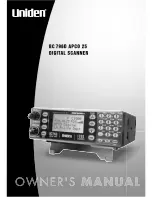
ProtEX PD8-6080/PD8-6081 Explosion-Proof Modbus
®
Scanner Instruction Manual
14
Pre-Installed Conduit/Stopping Plug
The PD8-6000 is supplied with two pre-installed conduit plugs for installations that do not require the use
of all conduit entries. The conduit/stopping plugs include an internal 12mm hexagonal socket recess for
removal. The pre-installed plugs and their installation are included in the hazardous area approvals for
the PD8 series enclosure.
WARNING
In hazardous areas, conduit and conduit/stopping plugs require
the application of non-setting (solvent free) thread sealant. It is
critical that all relevant hazardous area guidelines be followed
for the installation or replacement of conduit or plugs.
Mounting
The ProtEX-MAX has four slotted mounting flanges that should be used for pipe mounting or wall
mounting. Refer to
Mounting Dimensions
, page 82 for details.
WARNING
Do not attempt to loosen or remove flange bolts
while the instrument is in service.
Cover Jam Screw
The cover jam screw should be properly installed once the instrument has been wired and tested in a
safe environment. The cover jam screw is intended to prevent the removal of the instrument cover in a
flameproof environment without the use of tools. Using a M2 hex wrench, turn the screw clockwise until
the screw contacts the aluminum enclosure. Turn the screw an additional 1/4 to 1/2 turn to secure the
cover. Caution: Excess torque may damage the threads and/or wrench.
Transmitter Supply Voltage Selection (P+, P-)
All scanners, including models equipped with the 12/24 VDC power option, are shipped from the factory
configured to provide 24 VDC power for the transmitter or sensor. If the transmitter requires 5 or 10
VDC excitation, the internal jumper J4 must be configured accordingly.
To access the voltage selection jumper:
1. Remove all the wiring connectors.
2. Unscrew the back cover.
3. Slide out the back cover by about 1 inch.
4. Configure the J4 jumper, located behind the input signal connector, for the desired excitation
voltage as shown.
Figure 1. Transmitter Supply Voltage Selection















































